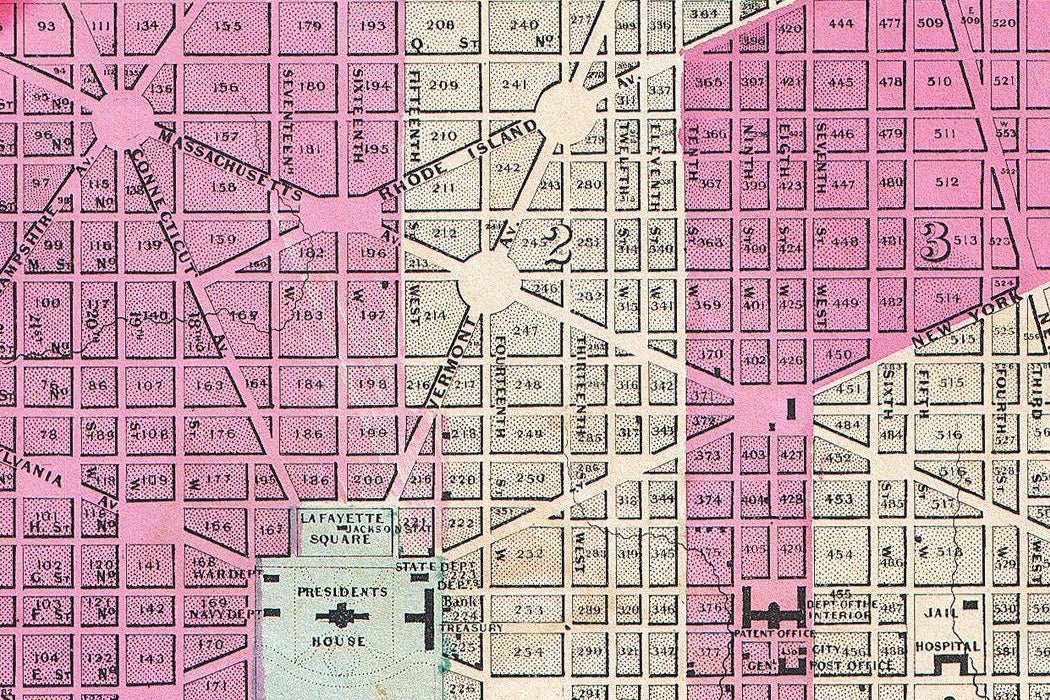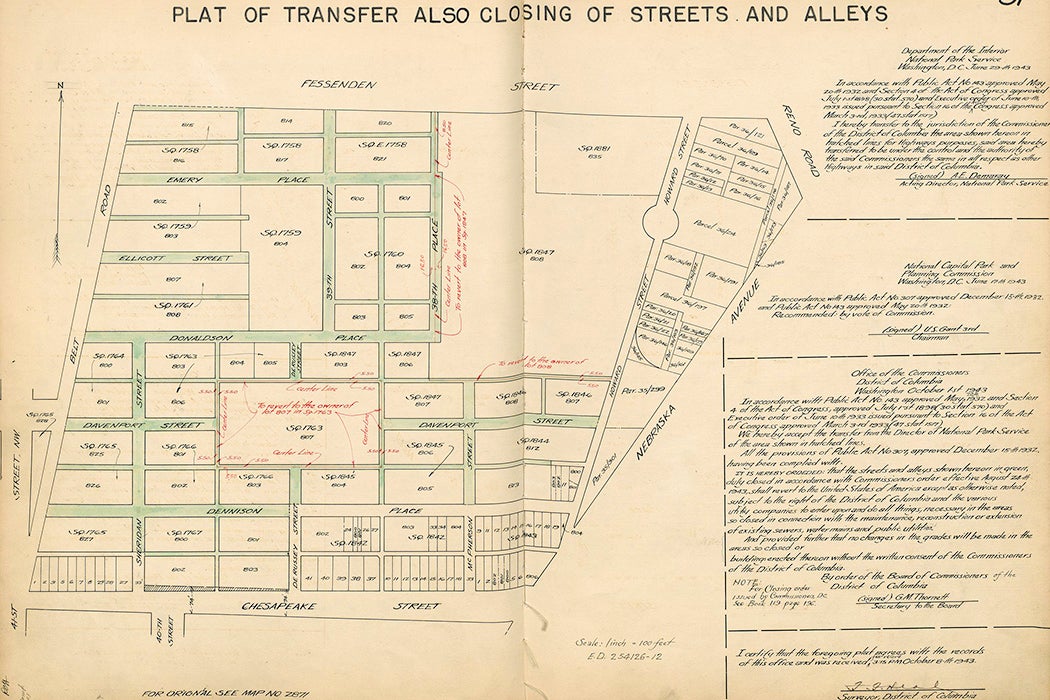Residential segregation isn’t just the work of homeowners, real estate agents, and bankers. Local, state, and federal government governments have also played a major roles in enforcing segregated housing. This history was documented on an intimate scale by scholar Mara Cherkasky and family descendant Athena V. Scott, who detail how the Scotts of Washington, DC, lost five homes to eminent domain between 1912 and 1948 while the government enabled white gentrification and maintained segregated schools in the nation’s capital.
Eminent domain is one of government’s most potent tools. This legal process allows the taking of private property for public use. Under the Fifth Amendment to the US Constitution, government can do so as long it pays just compensation. In theory, the government can force the sale of property against any homeowner. In practice, Black homeowners in the District of Columbia were more likely targets. As Cherkasky notes,
The Scotts’ story illustrates how buying a house was an uncertain gamble for many twentieth-century African American Washingtonians in a city whose official priories did not include their welfare or recognize the sanctity of their homes and communities.
Lucy Scott, born in 1835, and Lawrence Scott, born about 1837, moved to Washington, DC, in the early 1850s. Free Blacks, the Scotts and their children worked in the District as laundresses, barbers, teamsters, and railroad peters. One even toured Alaskan waters as a Navy steward.
In 1884, Lucy Scott’s son Edmond, employed by the Bureau of Engraving and Printing, paid $565 for a two-story wood-frame house on Meridian Hill, a thriving community started by free Blacks during the Civil War. In 1910, Congress appropriated money to purchase land for the creation of Meridian Hill Park, the special project of Mary Foote Henderson, wife of a Missouri Senator.
The Hendersons were the area’s largest homeowners. A “park intended to complement the gracious mansions and apartment buildings rising along 15th and 16th Streets NW,” meant the end of the modest two-story row houses on Euclid Street. Edmond Scott, amongst other local homeowners, fought the condemnation, but he ultimately had to take the $3,673.33 the Scott home was appraised for in 1912. The Scotts were one of forty families bought out, all Black except for the Russian Jewish family who ran the corner store.

A public park is undoubtedly a public use—if you can use it. It’s also a good way to increase property values, so that today’s enforced “just compensation” is tomorrow’s missed wealth. The new neighborhoods developed around Meridian Park had racial covenants to keep out non-white residents.
Other Scott family members lived in Reno City, a neighborhood in the northwest part of the city. This working-class, mixed-race neighborhood was located on the highest point in DC. Over time, it was surrounded by the homes of white suburbanites. The all-white Northwest Suburban Citizens Association thought the hill would make a fine park, once Reno City was cleared of Black residents. By the early 1940s, three properties owned by various Scotts in Reno City were taken by the National City Park and Planning Commission—the federally legislated District “improvements” authority.
Weekly Newsletter
Another branch of the family fell afoul of the city’s segregated schools system. In the Brookland neighborhood during the 1940s, there was a legal challenge to the great distance local Black children had to go to reach their segregated elementary school. The City finally responded with a plan for a segregated elementary school on the street on which James and Gladys Scott Roberts lived. The Roberts home was razed in 1948 for the new playground. Gladys Scott Roberts argued that the school should have been built a few blocks away where there was more available land, but the more-organized white residents there prevented that.
In a macabre coda, the last resting place of numerous Scotts was itself gentrified. Columbia Harmony Cemetery in the Brentwood neighborhood closed in 1959 due to financial difficulties. A developer bought the land and had the remains removed to a cemetery in Maryland. A Metro station opened on the site of the old cemetery in 1976; a mall and housing were build there as well. Remains discovered during construction “were not widely publicized.” It also turned out that the headstones had not been part of the re-interment process—they were sold as fill material. In 2016, a restoration project began pulling them out of the Potomac.
Support JSTOR Daily! Join our new membership program on Patreon today.







